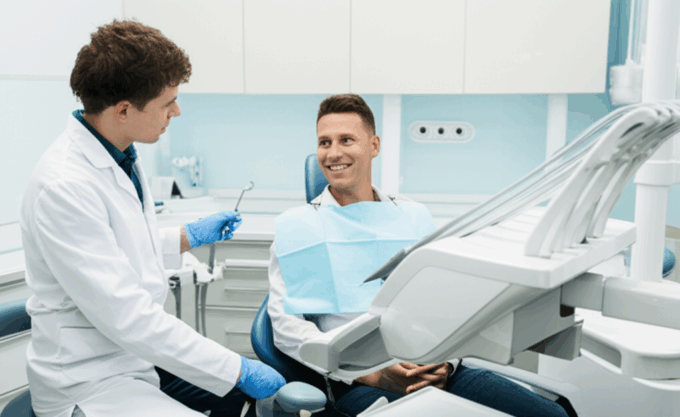Dental Consultation: What to Expect Now

Embarking on a dental consultation is a proactive step towards maintaining excellent oral health, and understanding what unfolds during this crucial appointment can significantly ease any apprehension. Whether you’re a new patient at a practice or returning for a routine check-up, this initial meeting serves as the foundation for your ongoing dental care. It’s an opportunity for the dental professional to get to know you, your medical history, and your specific oral health needs, while also allowing you to voice any concerns and understand the recommended treatment plan.
The First Steps: Paperwork and Initial Impressions
Upon arrival at the dental office, you’ll typically be greeted by the front desk staff who will guide you through the initial administrative process. This usually involves completing patient registration forms. These forms are vital and will request information such as your personal contact details, insurance information, and a comprehensive medical history. Be thorough and honest in filling these out, as any pre-existing conditions, allergies, or medications you’re taking can impact dental treatments. For example, certain medications can affect gum health, and a history of radiation therapy to the head and neck requires special consideration.
After the paperwork is complete, a dental assistant or hygienist will likely escort you to the examination room. This is where the initial rapport-building begins. They will take the time to ask about your primary reasons for visiting, any discomfort you might be experiencing, and your current oral hygiene practices. This informal chat helps them gather essential information before the dentist even enters the room and can put you at ease.
The Comprehensive Dental Examination: A Deep Dive into Your Oral Health
The core of your dental consultation involves a thorough examination conducted by the dentist. This is far more than just a quick glance at your teeth. The dentist will meticulously inspect every aspect of your oral cavity, including:
Teeth: They will examine each tooth for signs of decay (cavities), cracks, chips, and wear. They’ll also check for any existing fillings or restorations to ensure they are still in good condition and not causing issues.
Gums: The health of your gums is paramount. The dentist will look for signs of gingivitis and periodontitis, such as redness, swelling, bleeding, and pocket depth measurement. Healthy gums are firm and pink, with no signs of inflammation.
Tongue, Cheeks, and Palate: These soft tissues are also examined for any abnormalities, sores, or suspicious lesions that could indicate oral cancer or other conditions. Early detection of oral cancer is critical for successful treatment.
Bite and Jaw Alignment: The dentist assesses how your upper and lower teeth come together (your bite) and checks for any signs of temporomandibular joint (TMJ) disorders, which can cause pain and difficulty with chewing.
Radiographs (X-rays): In most initial dental consultations, X-rays are an indispensable diagnostic tool. They allow the dentist to see areas that are not visible during a visual examination, such as decay between teeth, issues with tooth roots, bone loss, and impacted wisdom teeth. Modern dental offices often use digital X-rays, which emit less radiation and provide immediate images.
Discussing Findings and Developing a Treatment Plan
Once the examination is complete, the dentist will sit down with you to discuss their findings in detail. This is your opportunity to ask questions and gain a clear understanding of your dental health status. The dentist will explain any issues identified, using clear and understandable language. They might use visual aids, intraoral cameras, or reference your X-rays to illustrate their points.
Based on the examination, the dentist will then propose a personalized treatment plan. This plan might include:
Preventative Care Recommendations: This could involve advice on brushing and flossing techniques, recommendations for fluoride treatments, or suggestions for dietary changes to improve oral health.
Professional Cleaning (Prophylaxis): If you are due for a cleaning, this will likely be scheduled. A dental hygienist will meticulously remove plaque and tartar buildup from your teeth, both above and below the gum line.
Restorative Treatments: If cavities, cracks, or worn fillings are present, the dentist will discuss options for restoring the teeth, such as fillings, crowns, or veneers.
Periodontal Treatment: If gum disease is detected, a treatment plan will be outlined, which could range from a deep cleaning (scaling and root planing) to more advanced surgical interventions for severe cases.
Orthodontic or Cosmetic Consultations: If you have expressed interest in straightening your teeth or any cosmetic dental procedures, this is a good time to discuss those possibilities and potential referrals.
###


